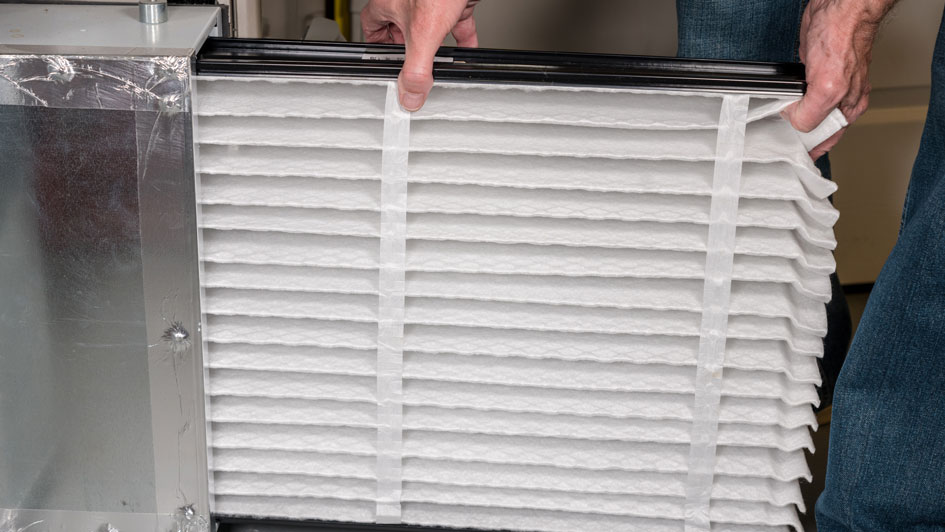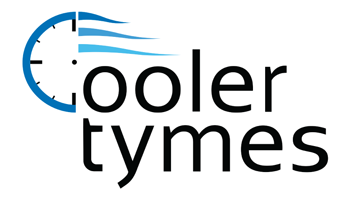
Picking out the right furnace filter and changing it when it gets dirty is as important to your HVAC system as changing the oil is to your car. Each plays a vital function in keeping its system running safely, efficiently and for a long time.
An overused furnace filter loses its effectiveness, permitting potentially harmful particles to circulate through your home. It also limits airflow, which can damage your furnace and decrease its life span.
Ensuring your furnace uses a clean filter that is suitable for your needs is not just about keeping your furnace operating efficiently. It’s also about providing excellent indoor air quality for your household.
Your health is important to the heating and cooling professionals at Cooler Tymes LLC. We've long been dedicated to bettering indoor air quality in Litchfield Park. Here, we’ve answered frequent questions about HVAC filters, including that especially tricky question of what direction do you point a filter in your furnace or air conditioner?
When Should I Replace My Furnace Air Filter?
Experts stress it's vital to replace dirty air filters in a furnace or air conditioner regularly. Dirt-clogged filters cause the system to worker harder than it should because it takes extra work to move air through the plugged-up filter.
Officials suggest checking your furnace filter every month and replacing it if it’s dirty. You’ll know if your filter needs changing because it will be gray or black from dirt or dust. Homeowners who have dogs and cats will probably need to replace their furnace air filter more often, because a quality air filter will trap pet hair circulating in a home.
How to Find the Furnace's Air Filter
In general, a furnace air filter is usually found in the return air duct or blower compartment before the return air reaches the furnace. This ensures air flowing into the system is filtered before it passes through the furnace components and is heated.
Depending on the furnace brand, the filter may be positioned on the right, left, bottom or in some cases, within the furnace. It's generally housed inside of a slot, frame or cabinet for convenient access and replacement. Always refer to your furnace's owner manual for details regarding filter location of the furnace in your home.
Is a Furnace Filter the Same as an Air Filter?
The straightforward answer is, yes. In HVAC, a furnace filter and an air filter or air conditioner filter are effectively the same. While they might be called different things based on the current season— summer or winter—they are all filters that clean the air in your residence.
They each eliminate dust, allergens, bacteria and other particulates from the air that is drawn into the furnace and air conditioning system, making certain the air distributed throughout your home is clean and safe.
What Are MERV Ratings and What MERV Rating Do I Need?
Once you locate your old furnace filter and decide when it should be changed, it’s time to select a replacement. That means determining the level of filtration that you need. One approach to this is by choosing an appropriate MERV rating for your needs.
MERV is an abbreviation for Minimum Efficiency Reporting Values. The MERV rating indicates the effectiveness of air filters at trapping airborne particles. The rating scale ranges from 1 to 20, with greater numbers indicating the power to filter small particles.
Experts say a filter with a MERV rating between 8 and 13 offers an ideal balance between having good indoor air quality without unnecessarily restricting airflow. However, people with specific health conditions may need to purchase a filters with a higher MERV rating.
How to Place the Air Filter in a Furnace or Air Conditioner
Positioning an air filter in a furnace or air conditioner the proper way is crucial for the efficient operation of the heating or cooling system. Air filters have a particular direction, indicated by an arrow written on the side of the filter frame. The filter should be put in with this arrow pointing at the furnace or air conditioner, which is the direction of the airflow. If you're not sure about the airflow direction, remember that air always moves from the return duct towards the heat or cooling source. Therefore, make sure the arrow points at the furnace or air conditioner.
Many people struggle with which direction to install an air filter. To help remember, consider snapping a quick photo with your cell phone after the filter has been properly installed by a professional. Or, you also could ask a technician to use a marker to write on the outside of your furnace which direction the filter should point. A great time to inquire about this is during a routine furnace maintenance call.
How to Change a Furnace Air Filter
Changing the filter on your furnace or AC is a quick and easy process. Here is a step-by-step breakdown of how to retreive a dirty air filter and swap it for a new one:
- Turn off your furnace: Make sure to shut off your furnace before starting up the process.
- Locate the furnace filter: Typically, the filter is located inside the furnace or in the air return vent. Make note of which direction the arrow points on the filter, because you’ll want the arrow on the new filter to point the same way.
- Remove the old filter: Be careful not to knock out any dust or debris.
- Document the date: Write down the date of replacement on the new filter's frame. This will make it easier to keep track of when it's time for another replacement.
- Insert new filter: Put in the new filter with the arrow pointing at the furnace, which is the direction of airflow and should be the same direction the arrow pointed on the old filter you are replacing.
- Secure the filter: Make sure the new filter fits securely and close any latches or clips that lock it in the compartment.
- Turn on your furnace: Once the clean filter is completely installed, you can turn your furnace back on.
Will a Dirty Air Filter Cause Problems for a Furnace?
The short answer is, yes, a dirty air filter can cause a furnace to quit working or shorten its lifespan. Changing your furnace or air conditioning filter is one of the simplest things you can do to keep your system operating correctly.
